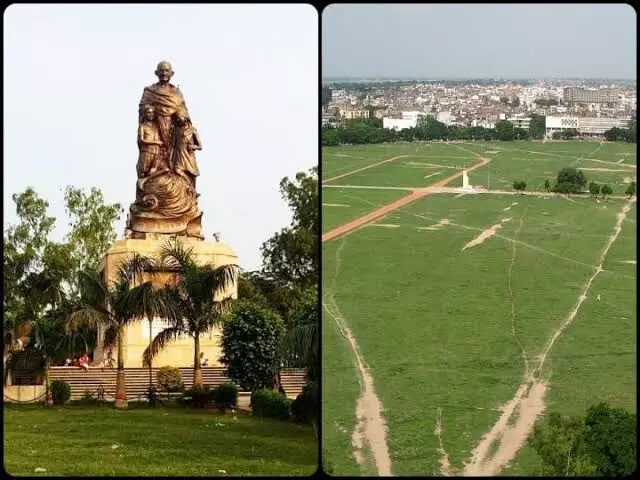The Day Terror Struck Gandhi Maidan

The recent terrorist attack in Pahalgam on April 22 once again stirred memories of the dark day on October 27, 2013 — when terror struck Patna’s heart, Gandhi Maidan.
It was the day Gujarat Chief Minister Narendra Modi was set to address the BJP’s "Hunkar Rally," marking his first major public event after being declared the National Democratic Alliance’s Prime Ministerial candidate. His nomination, announced on September 13, 2013, by BJP president Rajnath Singh after consultations with Parkash Singh Badal and Uddhav Thackeray, had intensified political rivalries.
Nitish Kumar, having severed ties with the BJP in July that year and allied with the RJD and Congress, was particularly aggrieved, his own prime ministerial ambitions reignited. Meanwhile, Lalu Prasad Yadav had been convicted in the fodder scam and was serving time in Birsa Munda Jail. The atmosphere in Patna was tense.
Before Narendra Modi could even reach Gandhi Maidan, a series of bomb blasts rocked the city.
I, along with photographer Pramod Sharma, set out to cover the rally. Every road leading to Gandhi Maidan — Kankarbagh, Chiraiyatand, Exhibition Road, and Station Road — was teeming with people. We parked our scooter at the Mahavir Mandir near Patna Junction and observed swelling crowds, even on the railway platforms.
At platform number 10, near Karbigahiya, a Patna-Gaya passenger train stood still amid growing panic. Near the Sulabh toilet, we found broken doors and, inside, a young man bleeding profusely. A porter and a policeman were trying to pull him out. Scattered nearby were a cloth bag and a cash box — silent witnesses to the violence.
It was later established that this toilet blast was the first explosion. The terrorists, who had traveled from Ranchi by train, were finalizing their deadly preparations there.
When we informed a senior police officer stationed nearby, he dismissed our concerns, stating, “No message has come from the control room yet.”
We continued towards Gandhi Maidan, parking at the Times of India office before making our way to the rally site. Modi arrived at the western gate in an Ambassador car, with no pilot vehicle or security convoy — a startling sight for a leader of his stature. As he entered, he greeted the crowd warmly, oblivious to the horror that had begun to unfold.
Local leaders had finished their speeches when Modi took the stage. As he spoke, explosions ripped through Gandhi Maidan — westward near the Biscomaun building, eastward at Khadi Bhawan, northward near Magadh Mahila College, southward at Ramgulam Chowk, and even in the center of the crowd.
Former Deputy Chief Minister and Patna MLA Sushil Kumar Modi quickly sensed the severity of the situation. Grabbing the microphone, he attempted to calm the crowd, attributing the blasts to overenthusiastic party workers bursting firecrackers.
But Narendra Modi had already seen injured people being carried away, private cars rushing victims to hospitals, and chaos breaking out towards the east side of the field.
An explosion even occurred near the stage. A senior police officer advised Modi’s team to urge him to end the speech and leave immediately. But Modi refused to budge.
By then, six people had already died, and nearly 90 were injured.
Despite the mounting threat, Modi completed his speech, launching a sharp attack on the state government for its failure to ensure security.
Only after he finished did authorities begin a full sweep of the ground, discovering eight additional live bombs — each potentially devastating.
One bomb, placed dangerously close to the stage, was so powerful that when defused near the Ganga River, the blast's sound terrified even the magistrates inside the control room.
Some officials even suggested locking the control room from the outside to escape potential attacks, but a woman magistrate wisely pointed out that doing so would risk being trapped and burned alive if terrorists set the building ablaze.
Meanwhile, Patna’s young District Magistrate, a Tamil Nadu native, went missing amid the crisis. It was later discovered that he had locked himself inside the confidential branch office, unreachable during the city's greatest hour of need.
The investigation was handed over to the National Investigation Agency (NIA), which arrested ten individuals from across the country.
The NIA filed its chargesheet on April 24, 2014.
In 2021, an NIA special court delivered its verdict: four were sentenced to death, three to life imprisonment, two to ten years, and one to seven years in prison.
The Gujarat Police later accused Bihar authorities of gross negligence, alleging that no advance liaison party had been sent, no proper metal detector checks were conducted at Gandhi Maidan, and overall security arrangements for the visiting Chief Minister were woefully inadequate.
Chief Minister Nitish Kumar rejected these allegations.
Three days later, Narendra Modi returned to Patna. He travelled by helicopter to Alawalpur village to meet the grieving family of a young man who had died in the blasts.
Even 11 years later, Modi vividly remembered that visit. As Prime Minister, he personally called me from Delhi, seeking an update on the family's current situation.
Moved by their loss, Modi had arranged for a family member to be employed by a private company.
The events of that day left a scar on the city — and a memory that time has not erased.
